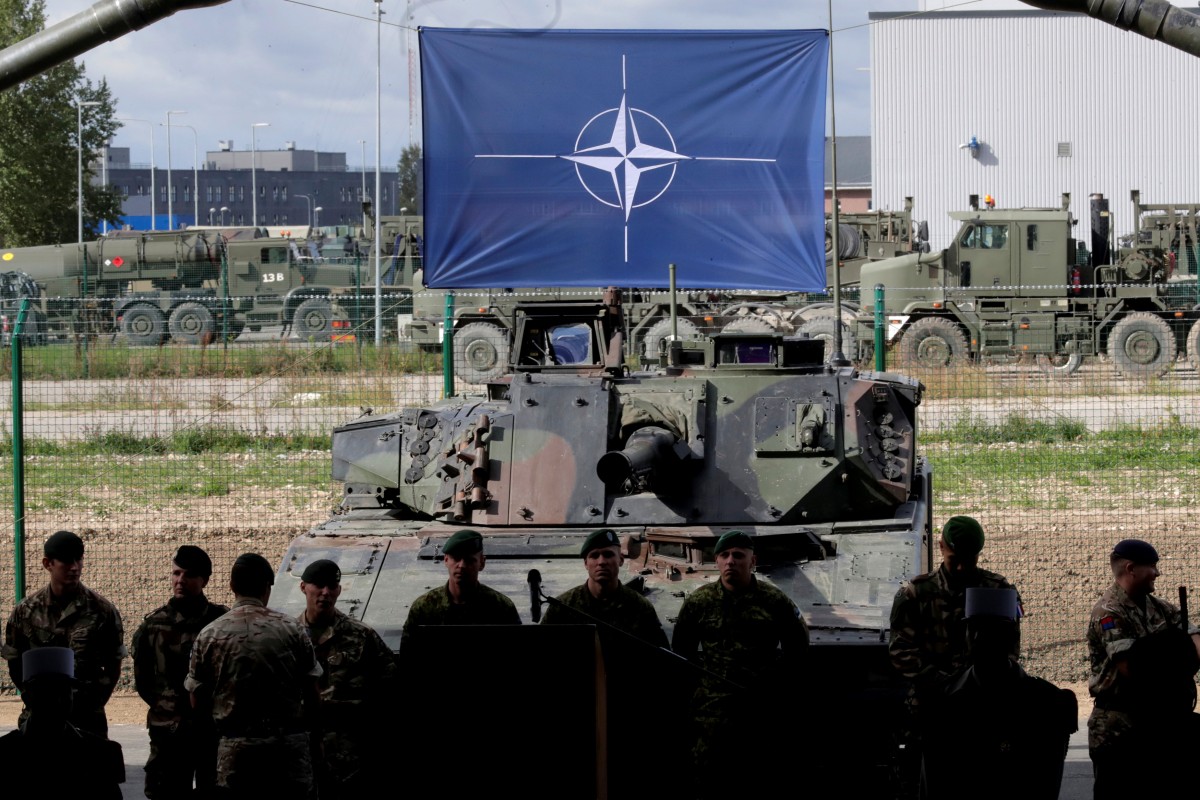|

Russian mechanized forces now rolling into Belarus directly threaten NATO, not just Ukraine. The U.S. and its allies are rightly focused on obvious Russian preparations to invade Ukraine and on trying to deter Moscow. Russian troops moving into positions in southeastern Belarus could be preparing to invade, and the West must respond in that context. But Russian forces are also taking up positions on and near the Polish border within about 100 miles of Warsaw and near the Lithuanian border as well. Deployments to these locations serve little purpose as part of a plan to invade Ukraine. They dramatically increase the Russian threat to Poland, however, and to NATO’s ability to defend its Baltic members even more. The U.S. and its Western European allies must respond to this threat to the alliance — whether or not the Russians attack Ukraine.
Seven to 10 mechanized battalions (equivalent to two-to-three brigades with 4,200-9,000 troops) have travelled from Russia’s Far East to Belarus. Two battalions of advanced Russian S-400 air defense systems as well as 12 Su-35 advanced fighters have also deployed to Belarus. Russia’s Defense Ministry claims these forces will remain in Belarus until mid-February for exercises. The exercises will supposedly occur primarily at training areas near Brest (on the Polish border), Baranovichi (northeast of Brest), Grodno (near the Lithuanian-Polish border), and Minsk. These are not the optimal locations from which to invade Ukraine, although Baranovichi is a good rear base from which Russian forces could stage for an attack. Some Russian troops, however, have already appeared in southeastern Belarus, far from any announced training area, and in one of the ideal locations from which to launch an invasion against Ukraine. The new Russian forces therefore threaten both Ukraine and NATO simultaneously.
The Russian move into Belarus is no spur-of-the-moment or opportunistic action. It is part of a long-term plan Vladimir Putin has been pursuing for years, which is why we have been forecasting it for many months. Putin has expressed his intent to open a military air base in Belarus since at least 2015. Russia has been preparing to project forces into Belarus since at least September 2020 through intensified combined exercises with Belarus. Russian troops have also been rehearsing logistics and command-and-control tasks necessary to deploy Russian forces into Belarus, including supplying fuel, ammunition, and other essentials closer to Belarus.
Russian ground forces exercising in Belarus over the past several years have always gone back to Russia, although Putin had permanently stationed S-300 air defense systems and Russian aircraft to conduct joint air patrols in Belarus and opened a joint training center (air base) in Belarus in August 2021. The troops moving into Belarus now might also return home, to be sure. But they may stay this time, or be rapidly replaced by others, because Putin has finally overcome Belarusian political constraints on his ability to station forces permanently in Belarus.
Putin and Belarusian President Alexander Lukashenko have been negotiating the terms on which Belarus would become part of a Union State with Russia for over two decades. Lukashenko has dragged this process out trying to retain some vestige of independence from Moscow. But in November 2021 he finally ratified all or almost all the agreements he’s been stalling including a revised joint Russian-Belarusian military doctrine. He also published a draft new constitution at the end of December 2021 that will likely be adopted this February. The new constitution strikes from the current one two key clauses committing Belarus to neutrality and banning the stationing of nuclear weapons in Belarus. The political and legal integration of Belarus into the Russia-controlled Union State has moved rapidly toward completion within the last few months, setting conditions for the permanent deployment of Russian troops in Belarus.
All this activity is the culmination of years of painstaking Russian planning and effort that long predated active Russian preparations to threaten an invasion of Ukraine. It is another example of Putin’s ability to conceive and pursue coherent strategies over a long period of time, not just to seize opportunities. And Putin has always meant it to threaten NATO as well as Ukraine.
The threat to Poland and the Baltic States from a Russian ground forces deployment in Belarus is very serious, as we have argued elsewhere. NATO must respond to this threat urgently. The U.S., Canada, and their Western European partners should immediately begin deploying mechanized forces of their own to northeastern and eastern Poland and should prepare to keep those forces there indefinitely.
Nothing less than the movement of troops and combat vehicles will suffice to reassure NATO’s easternmost members that the alliance will remain willing and able to defend them, particularly if NATO does not respond militarily to a Russian invasion of Ukraine.
Deploying forces to Poland now can also help deter Putin from adventurism in Ukraine by demonstrating America’s willingness to contemplate military responses to military threats. It would mitigate another weakness in the U.S. and NATO response to this crisis thus far by imposing an actual cost on Putin for protracting the crisis itself rather than simply threatening to impose costs if Putin attacks Ukraine.
Concrete action is urgently needed after President Biden’s comments on Jan. 19. Reinforcing NATO’s eastern flank is not sufficient to stop Putin’s adventurism and protect NATO and Ukraine, but it is the necessary next step.
|



